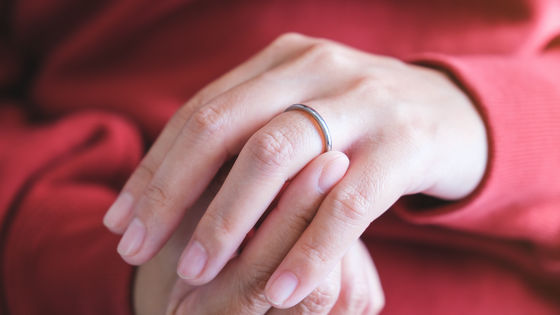What exactly is 'Vena amoris' (vein of love), which is said to be one of the reasons why engagement and wedding rings are worn on the ring finger of the left hand?

'Wearing an engagement ring on the ring finger of the left hand' is a traditional ritual in Western culture, but it is also common in Japan. You can find a detailed explanation on the English Wikipedia about the ancient Egyptian belief of ' Vena amoris (vein of love) ,' which is often cited as the origin of the position of the ring on the left hand.
Engagement ring - Wikipedia
Vena amoris - Wikipedia
https://en.wikipedia.org/wiki/Vena_amoris
In an article titled 'On which finger should you wear your engagement ring or wedding ring?', Zexy , a wedding information magazine published by Recruit, writes, 'The reason for wearing it on the ring finger of the left hand is because in ancient Greece, it was believed that the ring finger of the left hand had a large vein (the vein of love) that connected to the heart. The heart is considered a symbol of love, and it is said that the custom of wearing it on the ring finger of the left hand became commonplace.' Also, in Christianity, the ring finger of the right hand is said to represent 'justice' and bring happiness, so some sects wear wedding rings on the ring finger of the right hand. It is said that there is a meaning behind which finger you wear your ring on, not just on the ring finger of the left hand, and Zexy gives an example below.

There is no explanatory page on the 'veins of love' on the Japanese Wikipedia, but the English Wikipedia entry for '
According to the 'Engagement ring' page, the ancient Egyptians invented the engagement ring, and the tradition can be traced back to ancient Greece or Rome. This tradition was popularized by Henry Swinburne , a legal scholar active in the 16th and 17th centuries, in his 'Treatise on Consorts, or the Marriage Contract,' which he wrote until just before his death and was discovered and published after his death.
According to the paper, an analysis of ancient Roman history reveals that there was a tradition of wearing an engagement ring on the 'ring finger of the left hand,' which was believed to have a 'vein (the vein of love) connected to the heart.' Swinburne wrote, 'Putting the ring on the finger that holds the vein of love signifies, as one holds out the hand, the holding of the heart from which it extends.' Swinburne cites ancient texts about this belief and claims a link to Egypt.

The ancient document cited by Swinburne is thought to be related to the Seven Books of the Saturnalia, written by
Another ancient passage is found in 'On the Offices of the Church,' written by Isidore of Seville, a 7th-century archbishop also known as 'the last scholar of the ancient world.' In it, the author writes, 'Men began to wear their rings from their thumbs to their ring fingers, because on the ring finger there is a vein that leads to the heart, and this was thought by the ancients to be worthy of attention and respect.' There is a passage about the 'vein that leads to the heart.'
It was not until the 17th century, when British physician William Harvey proved that 'all blood vessels flow to the heart,' that it was scientifically recognized, but until then, the belief was that there was a 'vein leading to the heart,' or in other words, a 'vein of love.' For this reason, in addition to the tradition of wearing rings on the ring finger of the left hand, the idea that 'pinching the ring finger of the left hand will alleviate illness' was widespread in some areas.

Swinburne's treatise, as well as the Seven Books of Saturnalia and On Church Offices, which Swinburne is said to have used as references, are merely theories, and there are many conflicting sources regarding the origin of wearing rings on the ring finger. There are also cultures that wear wedding rings on the right hand, and in these cultures, a historical connection between the position of the ring and the 'vein of love' is asserted. In any case, it is believed that the belief that the position of the engagement ring should be 'directly connected to the heart' has remained since ancient times.
Related Posts:
in Note, Posted by log1e_dh







